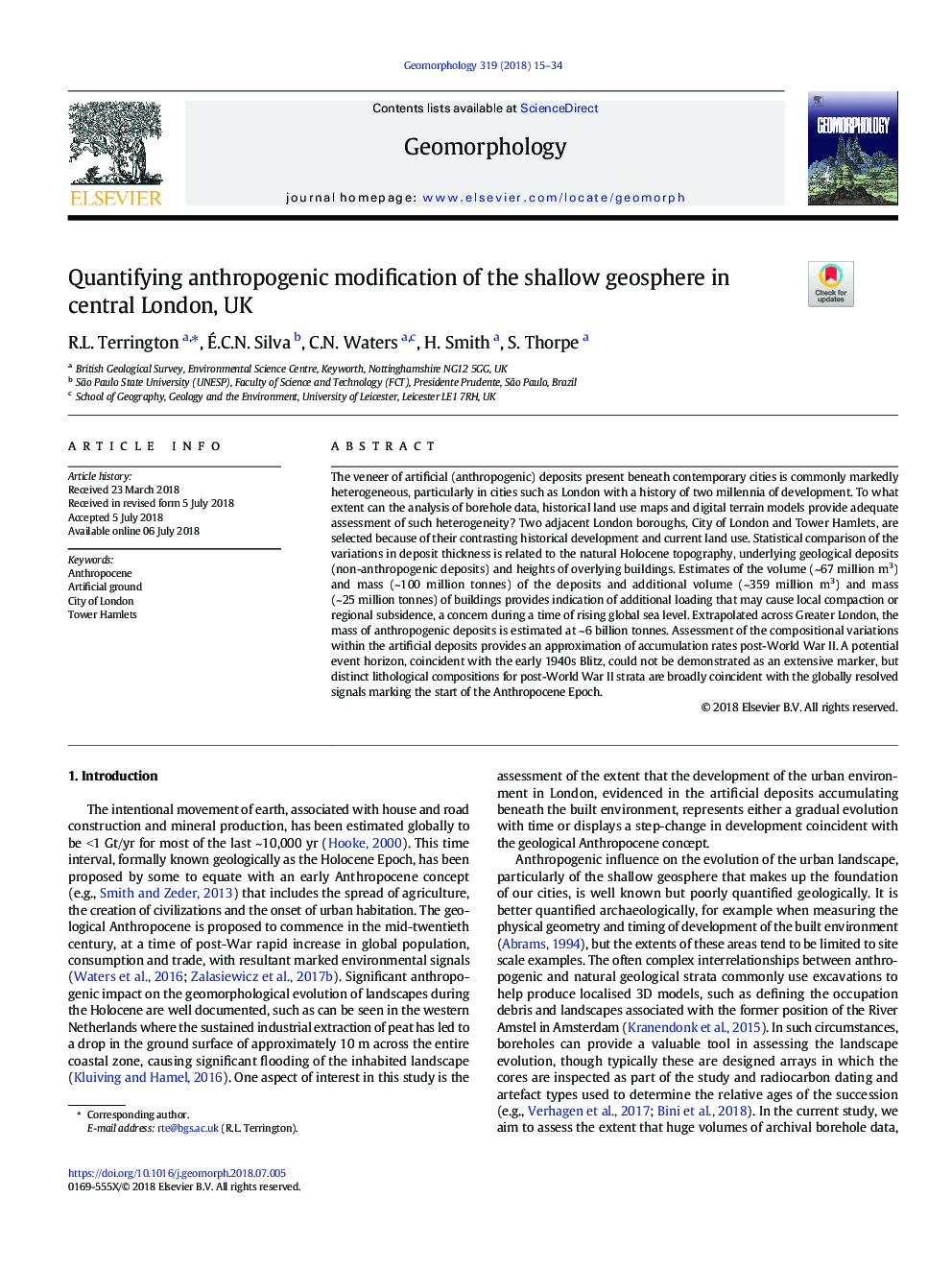| Article ID | Journal | Published Year | Pages | File Type |
|---|---|---|---|---|
| 8907911 | Geomorphology | 2018 | 20 Pages |
Abstract
The veneer of artificial (anthropogenic) deposits present beneath contemporary cities is commonly markedly heterogeneous, particularly in cities such as London with a history of two millennia of development. To what extent can the analysis of borehole data, historical land use maps and digital terrain models provide adequate assessment of such heterogeneity? Two adjacent London boroughs, City of London and Tower Hamlets, are selected because of their contrasting historical development and current land use. Statistical comparison of the variations in deposit thickness is related to the natural Holocene topography, underlying geological deposits (non-anthropogenic deposits) and heights of overlying buildings. Estimates of the volume (~67â¯millionâ¯m3) and mass (~100â¯millionâ¯tonnes) of the deposits and additional volume (~359â¯millionâ¯m3) and mass (~25â¯millionâ¯tonnes) of buildings provides indication of additional loading that may cause local compaction or regional subsidence, a concern during a time of rising global sea level. Extrapolated across Greater London, the mass of anthropogenic deposits is estimated at ~6â¯billionâ¯tonnes. Assessment of the compositional variations within the artificial deposits provides an approximation of accumulation rates post-World War II. A potential event horizon, coincident with the early 1940s Blitz, could not be demonstrated as an extensive marker, but distinct lithological compositions for post-World War II strata are broadly coincident with the globally resolved signals marking the start of the Anthropocene Epoch.
Keywords
Related Topics
Physical Sciences and Engineering
Earth and Planetary Sciences
Earth-Surface Processes
Authors
R.L. Terrington, Ã.C.N. Silva, C.N. Waters, H. Smith, S. Thorpe,
